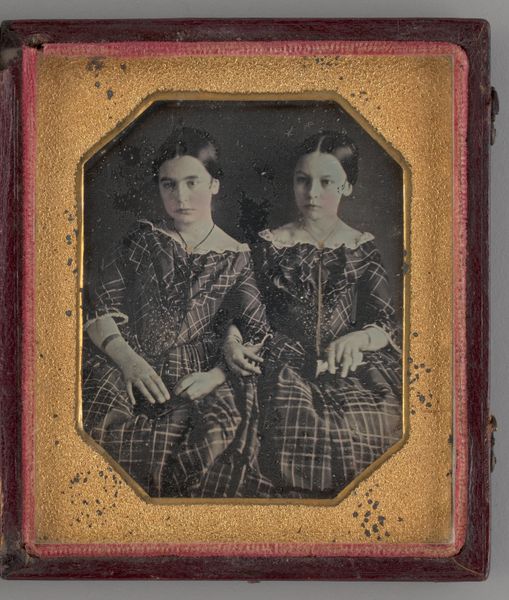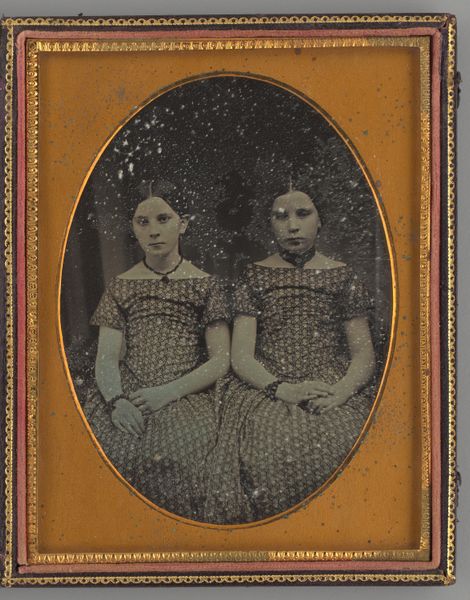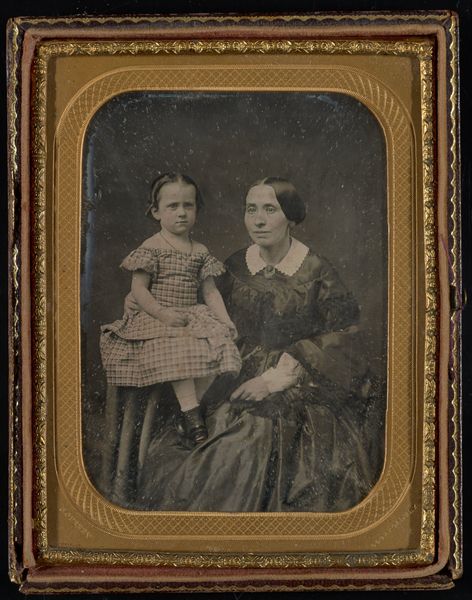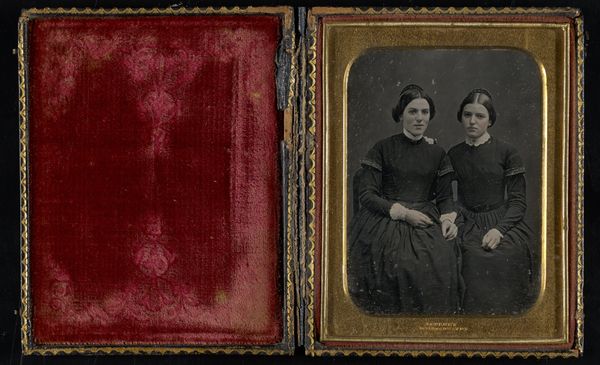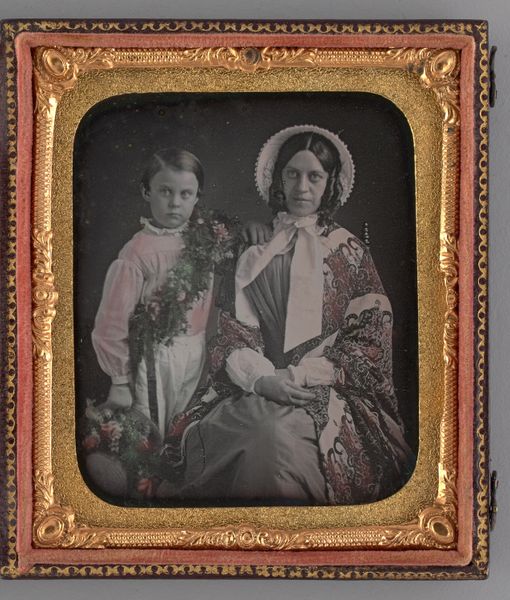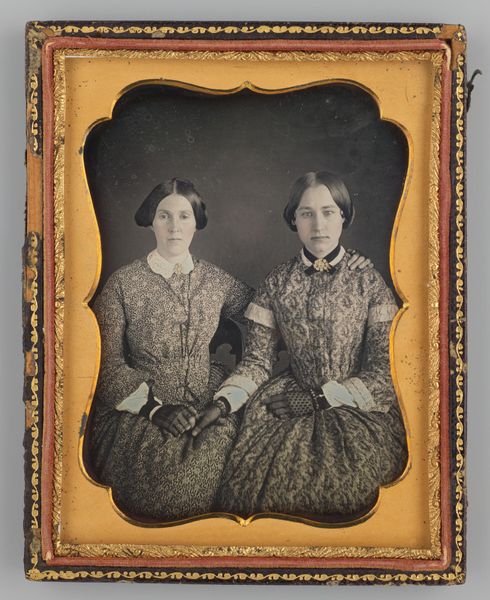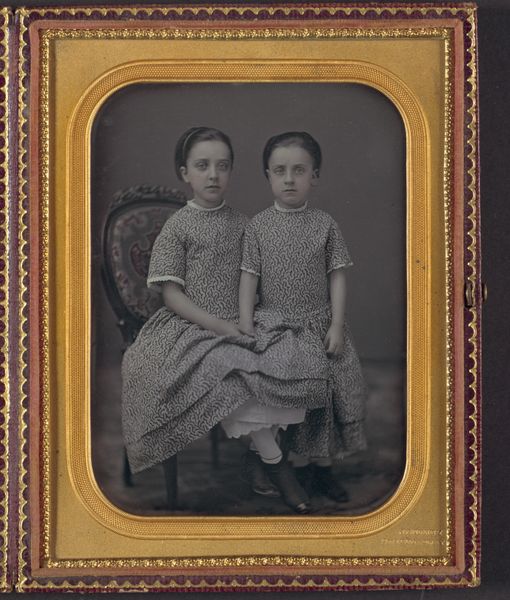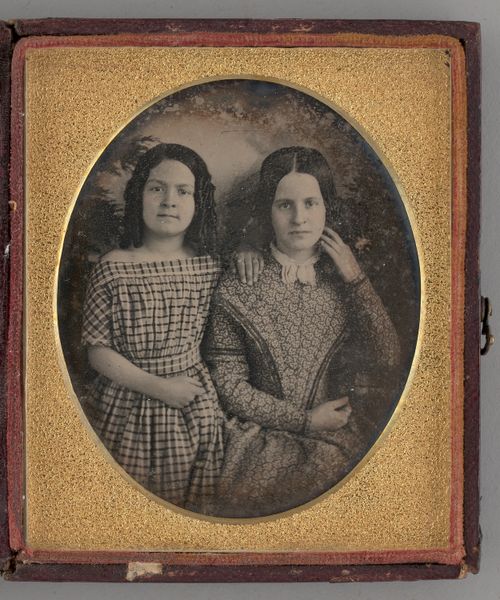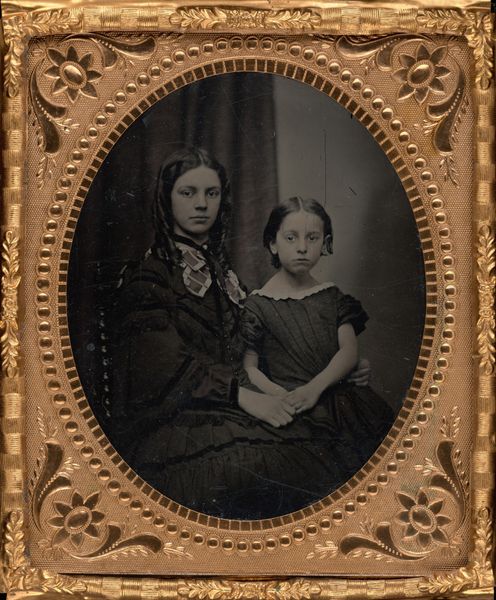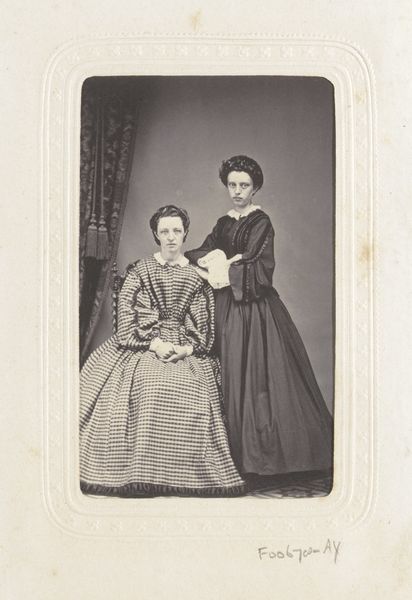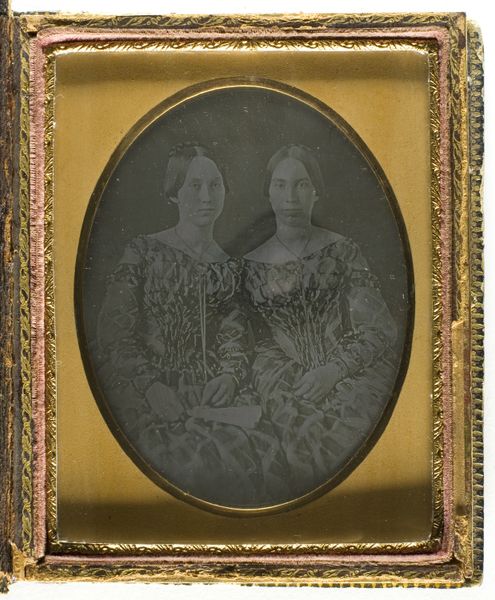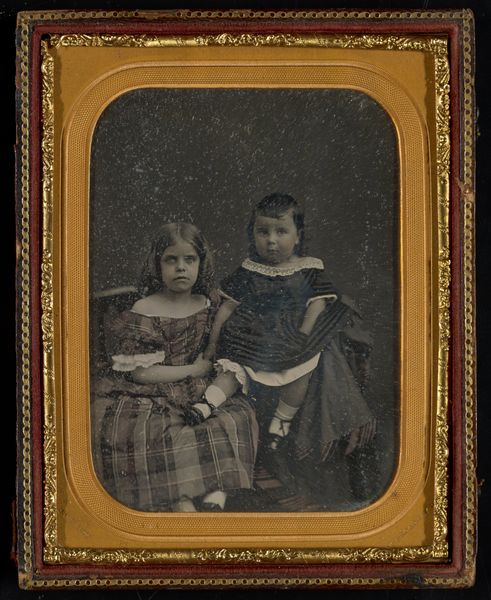
Untitled (Portrait of Seated Two Girls Holding a Book) 1848
0:00
0:00
daguerreotype, photography
#
portrait
#
16_19th-century
#
daguerreotype
#
photography
#
group-portraits
#
united-states
Dimensions: 8.1 × 7 cm (3 1/4 × 2 3/4 in., plate); 9.3 × 8 × 1.3 cm (case, no cover)
Copyright: Public Domain
Curator: This is an anonymous daguerreotype, “Untitled (Portrait of Seated Two Girls Holding a Book),” created in 1848 here in the United States. Editor: The weight of seriousness, you know? That stark light and the stiff posture, even with the book suggesting knowledge, the mood just feels… reserved, almost melancholic. Curator: Daguerreotypes, being a very early form of photography, had incredibly long exposure times, making it difficult to capture natural smiles. And yes, the materiality – the silver-plated copper, the meticulous polishing – points to the cost and labor involved. Each plate was unique. This wasn’t a casual snapshot; it was a considered production. Editor: Production is right. Looking at the patterns in their dresses, I imagine the girls choosing what garment will properly convey the correct message for posterity. They had so few options. It also reminds me of the limitations the medium places upon them. A daguerreotype captures more than an image: it’s also a document of industrial capability meeting human desire. Curator: Precisely. Consider the rise of the middle class at this time, and the emerging market for personal portraiture made more accessible through technological advancements such as the daguerreotype. We see photographic studios sprouting up to cater to those desiring these records of status and self. Editor: Self-possession is hard won in this one. There's an effort to be respectable. I think it hints at societal pressures, especially on women, regarding appearance and demeanor, even something as seemingly harmless as reading. It’s like saying "we are good". The photo becomes a curated claim. Curator: Absolutely, from a modern point of view. The creation of photographs were very specific about showing one's wealth and standing. In some ways that hasn't changed as technology moves ever further ahead! Editor: Seeing them, holding that book together, they’re not just faces from the past. We’re linked. And that's the eerie magic, don't you think? Curator: Yes, and by observing the technologies that preserve such moments, perhaps we can better discern both the progression of photographic documentation and the societal undercurrents it illustrates.
Comments
No comments
Be the first to comment and join the conversation on the ultimate creative platform.
